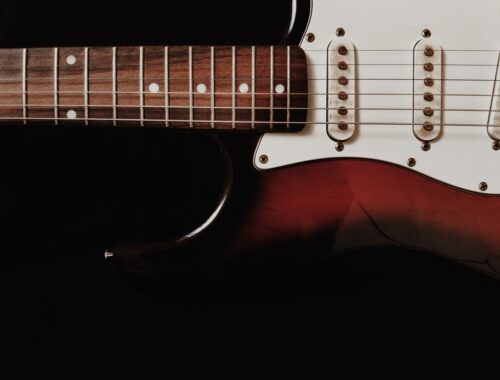
Tips for Achieving Clean Guitar Playing: Mastering Clarity and Precision
Clean guitar playing is a hallmark of a skilled guitarist. The ability to produce clear and precise notes, chords, and melodies not only enhances the musicality of your performance but also allows for more expressive and nuanced playing. Whether you’re a beginner or an experienced guitarist, achieving clean guitar playing is a continuous journey. In this comprehensive guide, we’ll explore essential tips and techniques to help you attain the clarity and precision that will set your playing apart.
1. Develop Proper Finger Placement
The foundation of clean guitar playing begins with correct finger placement. Ensure that your fingers are pressing down on the strings close to the frets. This minimizes the distance the string has to travel to the fret, resulting in cleaner, buzz-free notes. Pay attention to the angle of your fingers and use the tips to avoid unintentional muting of adjacent strings.
2. Use Proper Thumb Positioning
The thumb plays a crucial role in maintaining clean playing. It should be placed behind the neck, opposite your fingers. This positioning provides stability and control, allowing you to press the strings evenly and cleanly. Avoid wrapping your thumb around the neck, as it can lead to poor finger positioning and sloppy playing.
3. Gradual, Even Pressure
When pressing down on the strings, apply gradual, even pressure. Avoid squeezing the strings too hard, as this can cause the notes to go sharp. Conversely, pressing too lightly results in muted or buzzed notes. Finding the right balance is key to clean guitar playing.
4. Hand and Finger Strength Exercises
Building hand and finger strength is vital for achieving clean guitar playing. There are various hand and finger exercises, such as trill exercises and finger-picking drills, that can help improve your finger strength, independence, and agility.
5. Pay Attention to Your Fretting Hand
Clean playing begins with your fretting hand. Observe your hand and fingers closely while you play. Make sure each finger is arched, avoiding contact with adjacent strings. This reduces the chances of unwanted string muting and ensures that each note rings out clearly.
6. Precision in Picking Hand Technique
Clean guitar playing is a result of both hands working together seamlessly. Pay attention to your picking hand technique. Use a consistent and controlled motion when plucking the strings, whether you’re using a pick or fingerstyle. Avoid excessive force, which can lead to unintended string noise.
7. Muting Unwanted String Noise
Unwanted string noise, such as string ringing or sympathetic vibrations, can compromise clean playing. Learn to use your palm to mute the strings that you’re not playing. By lightly resting the edge of your palm on the strings near the bridge, you can prevent them from ringing out when you don’t want them to.
8. Use Clean, Smooth Slides
When using slides in your playing, ensure that the motion is smooth and even. Sudden or jerky slides can result in undesirable string noise and a lack of clarity in your playing. Practice controlled and measured slides to achieve clean transitions between notes.
9. Practice String Bending Control
String bending is a technique commonly used in lead guitar playing. Achieving clean bends requires control and precision. Practice bending the string to the desired pitch with accuracy, avoiding over-bending or under-bending.
10. Utilize Vibrato Effectively
Vibrato is a beautiful technique that adds expressiveness to your playing. When using vibrato, maintain control over the rate and width of the vibrato. An uncontrolled or overly wide vibrato can muddy the sound, while a precise and controlled vibrato enhances the musicality of your playing.
11. Work on Legato Technique
Legato playing involves using hammer-ons, pull-offs, and slides to connect notes smoothly. Mastering legato techniques can lead to clean, fluid playing. Practice legato exercises to improve your ability to create seamless, connected lines.
12. Use Dynamics and Articulation
Dynamics and articulation play a significant role in clean guitar playing. Experiment with varying your picking strength and articulation to add expression to your music. Soft, nuanced notes can be as important as powerful, well-articulated ones.
13. Fingerstyle Techniques
If you’re a fingerstyle guitarist, pay special attention to your finger positioning and the angle at which you pluck the strings. Each finger should have a designated string, and precision in fingerstyle technique is crucial for achieving clean and articulate playing.
14. Slow Down and Practice With a Metronome
When learning a new piece or practicing challenging sections, slow down the tempo and practice with a metronome. Gradually increase the speed as you become more comfortable. Slow, deliberate practice helps build muscle memory and precision.
15. Record and Listen
Recording your playing is a valuable tool for self-assessment. Listen to your recordings critically to identify areas that need improvement. You’ll gain a better understanding of your playing and can work on specific issues.
16. Seek Feedback and Lessons
Don’t hesitate to seek feedback from experienced guitarists or take lessons with a skilled teacher. Constructive criticism and guidance can be immensely helpful in improving your technique and achieving clean playing.
17. Experiment with Different Setups
Guitar setup can significantly impact your playing. Experiment with different string gauges, action heights, and pickup heights to find the setup that works best for your playing style and technique.
18. Develop Your Ear
Developing your ear is essential for clean guitar playing. Train your ear to recognize pitch, timing, and tonal qualities. This will help you play more in tune and with better phrasing.
19. Maintain Your Guitar
A well-maintained guitar is crucial for clean playing. Regularly clean your instrument, replace old strings, and address any issues with the frets or the setup to ensure optimal playability.
20. Stay Patient and Persistent
Achieving clean guitar playing takes time and practice. Be patient with yourself and stay persistent in your efforts. Improvement is a gradual process, and each practice session brings you closer to your goals.
Clean guitar playing is a skill that sets the great guitarists apart from the rest. By focusing on proper finger placement, hand and finger strength, precision in both hands, and various playing techniques, you can achieve the clarity and precision that will make your playing stand out. It’s a journey that requires dedication and practice, but the rewards are well worth the effort. So, pick up your guitar, follow these tips, and embark on the path to achieving clean and expressive guitar playing.
You May Also Like

Essential Guitar Chords for Beginners
October 19, 2023
Introduction to Guitar Music Theory: Unraveling the Language of Music
September 30, 2023

